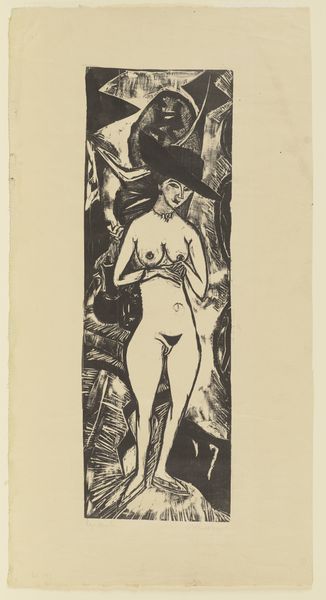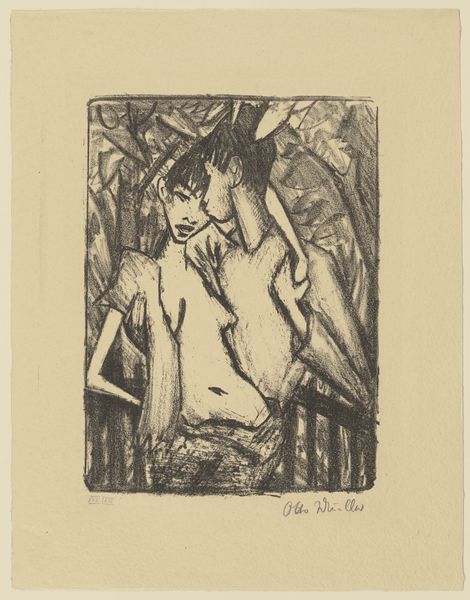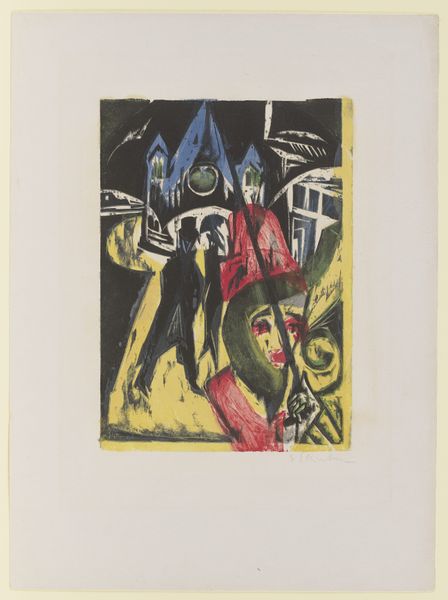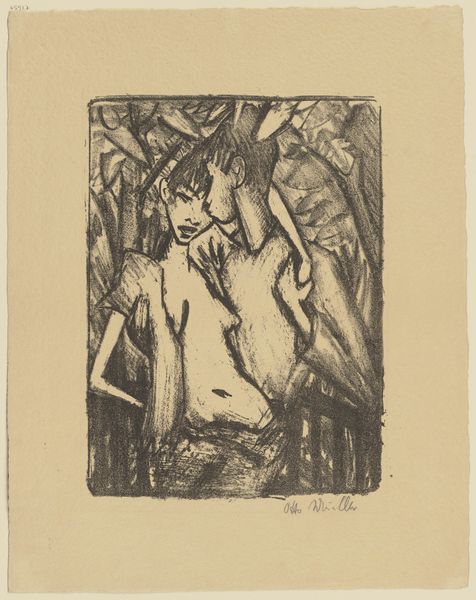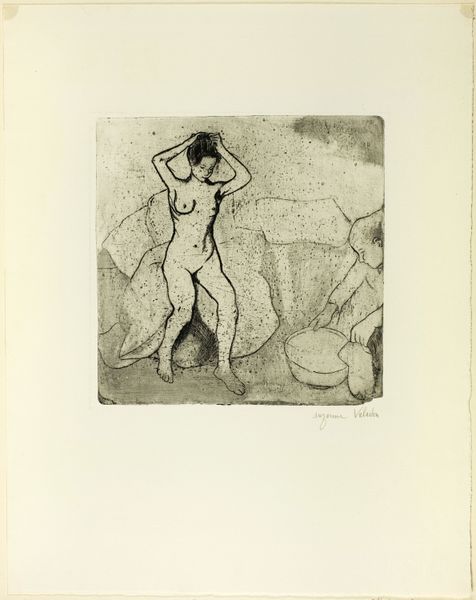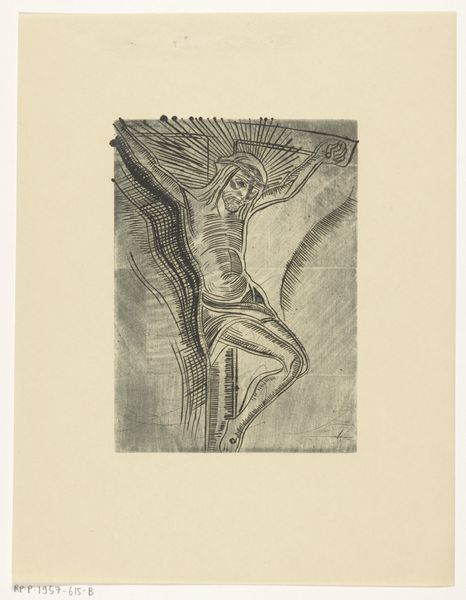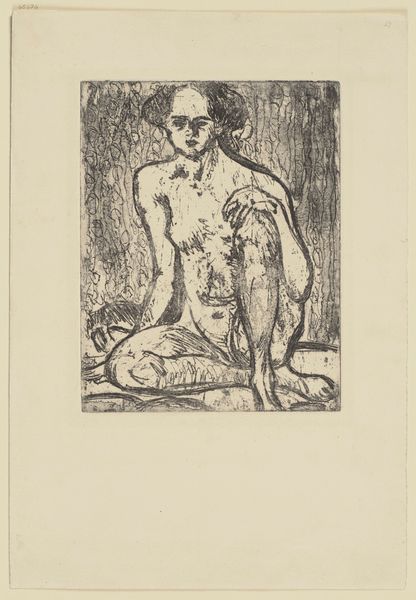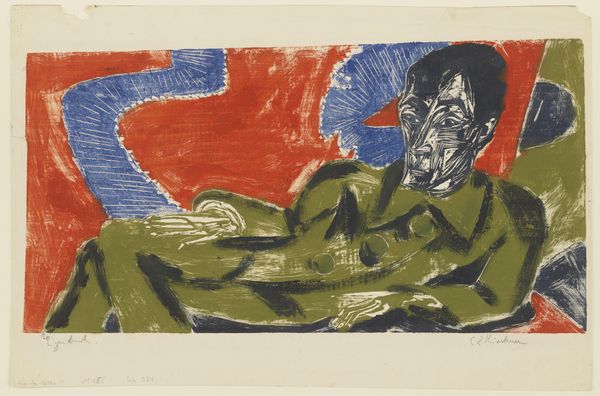
drawing, print, linocut
#
drawing
# print
#
linocut
#
linocut print
#
expressionism
#
watercolour illustration
#
nude
Copyright: Public Domain
Ernst Ludwig Kirchner created "The Lover, Sheet 2 of the series ‘Schlemihl’" as part of a larger portfolio referencing Adelbert von Chamisso's novel *Peter Schlemihl*. This expressionist print emerges from a society grappling with rapid industrialization, social anxieties and changing gender roles in early 20th-century Germany. Kirchner's Die Brücke group sought authenticity through raw and subjective expression, often challenging bourgeois norms. Here, the female nude becomes a vehicle to explore themes of alienation, and commodification. The stark lines, unnatural coloration and the woman's averted gaze evoke a sense of unease. Kirchner once stated, "Art is not there to depict the world, but to express the inner life.” The print invites us to consider the complex interplay between artist, model, and viewer. It reflects the objectification of women within the male gaze while hinting at the psychological toll of such representation. The vibrant yet jarring colors heighten the emotional tension, leaving us to ponder the price of intimacy and the search for identity within a fractured world.
Comments
stadelmuseum almost 2 years ago
⋮
During World War I, Kirchner came to regard the fairy-tale like story “Peter Schlemihls wundersame Geschichte” (“Peter Schlemihl’s Miraculous Story”;1813) by Adelbert von Chamisso (1781–1838) as a parable of his own loss of identity. He executed the “Schlemihl” cycle – his boldly autobiographical interpretation of the tale – the same year he was released from the military. The deeply self-reflective nature of the series may account for the fact that he printed only five complete copies of it and distributed them exclusively to close friends.Kirchner’s “Peter Schlemihl” cycle is one of the masterworks of Expressionism. As was the case with “Cocotte on the Street” (Städel Museum, inv. no. 65598), the artist printed the six sheets from two wooden blocks each, in part sawn in pieces and usually coloured with a brush in the manner of a monotype. Closely mirroring the contents of the story, the colour zones depart more and more from the outlines of the drawing block until the composition is composed entirely of colour. In the last print, the shadow has a shape more solid than that of Schlemihl, who has begun to dissolve.In Chamisso’s tale, Schlemihl exchanges his shadow for inexhaustible wealth, but as a result becomes an outsider to society. Kirchner read the tale as that of a “persecution paranoiac” who sells his “innermost attribute”, his shadow. He falls in love, but his love remains unfulfilled and he is moreover ostracized from society. On a country road, Schlemihl encounters the little grey man to whom he has once sold his shadow, but the transaction can no longer be undone. Downcast, Schlemihl wanders the countryside and unexpectedly meets his shadow, but does not succeed in fixing it to his soles again. In the end, Chamisso has his protagonist roaming the world in seven-league boots – a conciliatory motif Kirchner was incapable of visualizing.
Join the conversation
Join millions of artists and users on Artera today and experience the ultimate creative platform.


